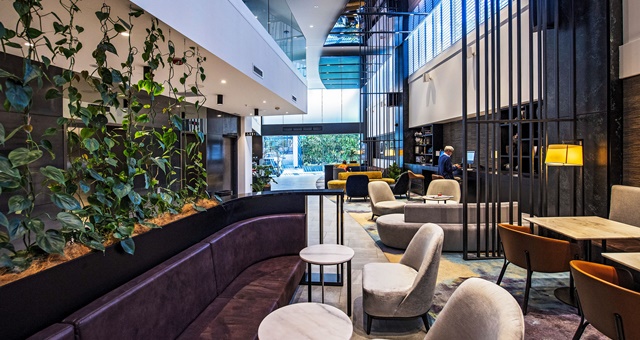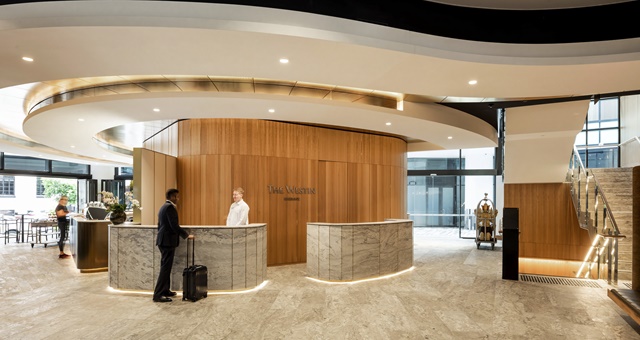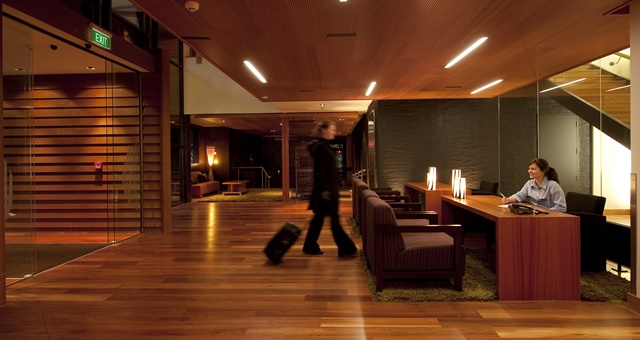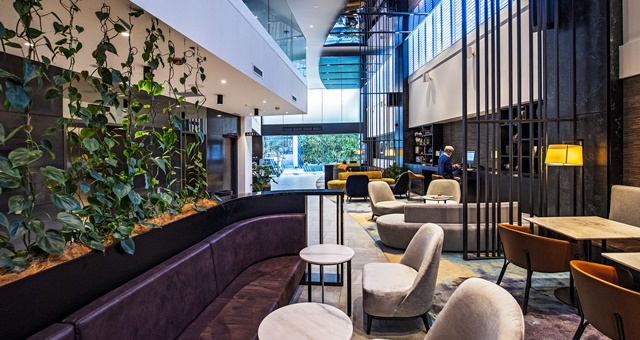
Every hotel in the world has a personality, best expressed in its lobby, dining venues and other public spaces.
Hotels have been searching for that magic ingredient that gives it that edge in a city or community since the beginning of time. But in authenticity, that edge could have been right under its proverbial nose the whole time.
Irrespective of whether that hotel sits in the middle of the busiest city or in the middle of a small regional town, that authenticity is the conduit and connection between a hotel and its customers. And most often, as the first point of contact for a guest, this authenticity and personality is displayed in a hotel’s lobby.
Psychologists have written that a business has only seven seconds in which to make its lasting first impression. In fact, that first impression is indelibly etched in a customer’s mind in as little as the first three seconds, with the remaining four perhaps a generous allowance in which your business’ fate is sealed, either positive or negative. Months of hard work can be eroded in just seven seconds if a particular detail is omitted or neglected. In prehistoric times, seven seconds was all that was available for a person to make a life-or-death decision when encountering a dangerous animal and while not as barbaric in the modern business world, the underlying premise remains true to this day.

For some architects and interior designers, a mental vision of a great lobby space can be developed almost as quickly upon laying eyes on the space available. For Richard Dalman of Dalman Architecture, which worked on the recently-opened Four Points by Sheraton in Auckland, mental images of what was to come were forming almost instantly.
“This is a conversion from an office building to a hotel. When we first walked into the existing office building, the location of the lobby was obvious. The space had great height and natural light from high-level windows that suited a grand hotel lobby space, so that is where we located it. This lobby is a comfortable oasis from the hustle and bustle of central Auckland.”
Central Auckland is a world away from Te Waonui Forest Retreat in Franz Josef, a luxury lodge in the New Zealand wilderness. Being a natural environment, the opportunity to incorporate natural elements is not lost on a designer. For Dalman, a different kind of thinking was needed here in order to preserve that authenticity – never more important than in a tranquil, natural setting where clients are seeking something entirely different.
“The reception ceiling is deliberately low, like being on the forest floor, and is quite a contrast to the light-filled restaurant above amongst the forest canopy,” Dalman explained.
“Guests are taken on a natural rainforest journey with this resort, which starts with this lobby. The reception reflects and is consistent with the exterior environment [with] authentic architecture that speaks of its place – a critical trend in contemporary hotel design.

For an architecture and design giant such as Woods Bagot, which is currently working on a catalogue of projects from city and airport hotels to architectural behemoths capable of housing not just a hotel, but an IMAX theatre. With such a variety of skyline-changing developments on the go, Woods Bagot Principal and Hotel Design Leader, Eva Sue, says the days of the typical lobby model is long gone.
“Today, the hotel lobby seeks to deliver individualised and memorable experiences for all travellers. This can manifest in the form of social and collective experiences such as bars, co-working and club-like spaces encouraging guest interactions, to more intimate and personalised experiences centred around art or contemplative library and lounge spaces. The Westin Brisbane lobby features a bar for a seamless check-in and lifestyle experience.”
For Woods Bagot Principal and Regional Interior Design Lead (Australia), Tracey Wiles, a designer can easily get carried away by their imagination if not for certain standards set by a managing hotel brand. However, this can often be negated by the sheer number of new brands hitting the market in today’s accommodation landscape. With every brand comes a new standard and with every new standard, a new design.
“With the extreme and continually growing influx of new brands coupled with increased guest awareness, it’s essential to ensure each offer is distinct from the next. We can be working between multiple diverse brands simultaneously, from QT to InterContinental and Marriott to Ovolo. The definition of each brand, combined with each unique location allows us to produce a truly individual experience for the guest.
“Aesthetics grow organically when responding to the location, brand standards, and overarching design concept functionally must be inherently embedded in the design process.”
And ultimately, the guest experience is why hotels do it at all.

